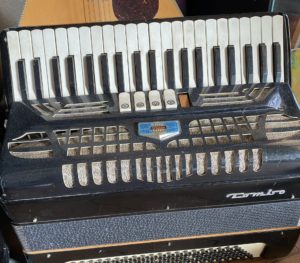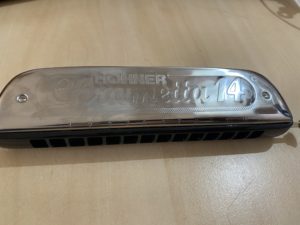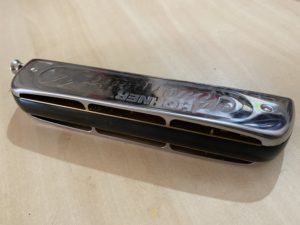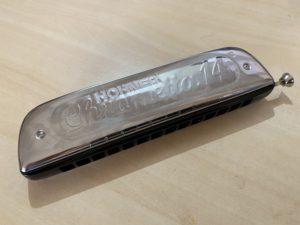Currently, I am very interested in playing harmonicas like harmonica companions, accordions of the same lead instrument, or band neon. When I talk about the harmonica of Argentine passion, I can't tell you enough in one word, so I will try to feature it in several sections from now on.
Speaking of Argentina, the harmonica player Hugo Diaz. I'm sure many harmonica fans have been surprised so far, but he is a traditional harmonica player who has been active in the formore and tango genres. Have you heard his passionate sound? The harmonica is added with a big mouth, and most are octaves of tang block. The tank block does not use when blowing octaves, and the hole is blocked with the tongue and a sound is made. His sound sounds like an accordion. It is a completely different sound use from Toots Sealmans. The sound of the harmonica of Mr. Tokunaga, a teacher I know, is close to Toots.
Well, here is a video of la kumpalcita (I can't find a video of Hugo) that you are familiar with from YouTube. Another song may not be very familiar, but it is a short performance that understands the characteristics of Hugo, but this is hugo diaz's harmonica.
It's very exotic.
Write with the accordion in consideration. The melody is made well by stretching and contracting the bellows to make a sound, but in the case of Hugo, the body itself hits the bellows of the accordion. I try to interpret it that way. Therefore, the intonation of the sound comes out, but Ugo itself does not move the body like a bellows. The use of breath and the use of the invisible body have been greatly related to it.
In terms of tank blocks, it's the same as how classical players play, but it's also mixed with packer playing. There are many other things.
When I listened to his music, I thought that it would not fit into the expression of mere classical music, so I thought that octave playing method should be called accordion (band neon) playing method. The reason is that it is different from the octave playing method again.
Not all are accordion fakes. In addition to the accordion-lik

e performance method, various methods of pl
An accordion for wanting to pay attention to the bellows
While the beautiful tones played by classical players are grainy, Hugo's performances are played in a way that is intensely intoned, romantically intoned, and sometimes sounding wild. You can't write much at the same time, but tango has a dance, and there is a history of the development of the performance, and the performance will be so. The Harmonica of Argentina is very similar to the sound of this accordion or band neon.
But like accordions, humans use harmonica tools to make sounds, so rough breathing, coughing, little voices, and the sound of saliva flying are also included in the performance.
These sounds can be jarring. When I first heard Hugo perform on CD, I thought so. But at that time I didn't know this performance was being played octaves. What a strange sound. I thought it would sound like this with the kind of harmonica.
As an aside, I often hear that Hugo used Chrometta, but when I listen to the performance, I wor
wor ry about which of the r
ry about which of the r
 ecorded ones was Crometta and which was not Crometta. In fact, I am considering it myself now. It is under consideration in Chrometta14.
ecorded ones was Crometta and which was not Crometta. In fact, I am considering it myself now. It is under consideration in Chrometta14.
But is it very good for me to express my emotions? I think. That performance would have been perfect for passionate music like tango. As if expressing or spitting out emotions!
In my concept, harmonica is easy to express individually, and I think that 'blowing the harmonica' is very good both mentally and physically. (Note. That doesn't say that you're going to play like Hugo.) (^_^;))
Now that the corona has been ravaged, it is up to us to feel it even more.
Well, I will end it around here today.
Thank you for reading to the end. 😊
Appointments after this
Argentine's harmonica player, accordion and translation, breathing exercises, tango and harmonica, etc. are scheduled.
Now, the traditional Argentinian harmonica player Santicago Alvares has also told us about these Argentine harmonicas, and we have seen some of the things that we haven't noticed before in Hugo's performance. I am very grateful to him. And thank you very much to everyone who helped me write this article. I'm always grateful.
HITOCO